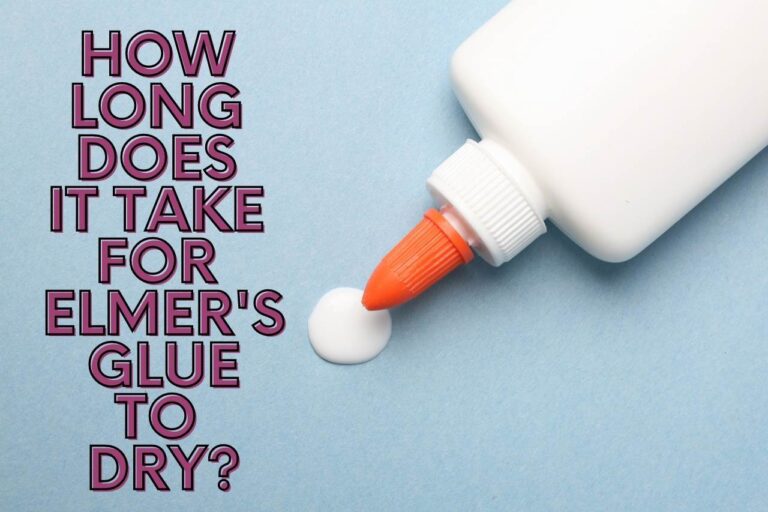How to Remove JB Weld from Metal? – Easy Solutions
Even though JB weld is one the most incredible glue out there, its drawback is how challenging it is to get it off when needed. Removing this glue from metals is a pain point, and many wonders if it is even possible. How to remove JB weld from metal?
Fortunately, it is possible to remove JB weld from metals. (We can hear you sighing)
This article is written for you if you are muddled about getting off JB weld from a metal surface.
Keep going to learn everything from A to Z to resolve the situation efficiently and effectively.
Let’s dive in.
Can you Remove JB Weld from Metals?
Yes, you can remove JB weld from metals.
JB weld is highly stubborn, as you are already aware. But we can outsmart it with a few practical ways and ultimately get it off the metal surface.
So fret not; go further into the context.
What will Dissolve JB Weld from Metal?
JB weld is not “sugar” to dissolve when a liquid is poured over. It is a very stubborn glue. So it can be challenging to take it off.
But thankfully, there are a few chemicals that will help you ease down the process of removal by softening and partly dissolving the tight and dry glue.
Alcohol is an effective solution for this purpose.
When you leave alcohol on top of the JB weld, it can penetrate through the glue’s potent molecules and break the bonds.
In simple words, alcohol will weaken the adhesive and thus make it soften and partly dissolve.
If you use strong alcohol, the rate of dissolving will be higher.
However, the process can be very slow, which is a pain point.
Apart from alcohol, vinegar and acetone would do some help too.
Applying vinegar and acetone on the JB weld can soften the glue and make it easier to come off. Be generous with the amount you use.
But you must have a lot of patience for the glue to finally soften and be ideal to be taken off.
All these chemicals mentioned above can help you dissolve JB weld to some extent and make it removable.
But will they completely dissolve them? Not at all.
How to Remove JB Weld from Metals?
A few proven ways will help you remove JB weld from metal surfaces.
Let us get into them one by ne.
-
Heat
Heat is a significant element you can use to confront JB glue.
When heated, the glue will start to melt. And nothing is more accessible than to wipe off melted glue.
But is it as simple as it sounds? We don’t think so.
The optimal temperature for the JB weld to begin melting is 600 degrees Celsius. (Yes, 600!!!)
It is not easy achieving that, is it?
You can use a heat gun to accomplish the task. If that isn’t possible with the resources available, go for an iron. But it can take some more time since the heat will take more time to penetrate to do its thing in the thicker JB weld layers.
You can also use a propane torch to heat the glue up to 600 degrees Celsius.
Once the JB weld starts melting, you can easily remove it from the metal surface. But be careful since it will be scorching.
-
Grinding/ scraping
Scraping off the glue layer is another way of removal.
You can use sandpaper, an angle grinder, or other tools to grind the JB weld slowly.
Take precautions before acting, as the scraped particles can be inhaled and cause respiratory issues.
Wear gloves and a mask during the process.
-
Chemicals
Chemicals such as vinegar, acetone and alcohol can soften the JB weld layer, making it easier to remove.
Depending on the intensity of the alcohol, the glue will soften. If you use potent alcohol, chances are that it will partly or mostly dissolve.
Frequently Asked Questions (FAQ)
Now that you know everything about dealing with JB weld and metal surfaces let us answer some of your most common FAQs related to the topic.
Let’s go!
-
Is JB Weld Wood Safe? Can I Use It on Cookware?
JB weld is safe to be used on wood, glass, ceramic and metal. However, please do not use it on cookware.
Because JB weld is not rated food safe. So it would be best if you didn’t let the glue be on the surfaces deemed to be exposed to food.
Cookware is always in contact with food. So it is not a good idea to use JB weld on them.
Go for other food-friendly glue options when dealing with cookware. Safety is important.
-
How Long Does JB Weld Last on Metal?
Sine JB weld is the world’s strongest bond, it really lives up to its name.
At the very minimum, it can last up to 3 years.
And at the maximum, it can last for more than twenty years. (Fantastic, isn’t it?)
But at the end of the day, it all comes down to your own usage and maintenance of the particular appliance.
If you poorly maintain it, the life span will be shorter. On the contrary, if you maintain it well, JB weld can have a long shelf life.
-
How Long does JB Weld take to Cure on Metal?
When JB weld is applied on meat surfaces, it will take 30 minutes at the maximum to harden.
However, it will take about 15 to 24 hours to fully cure and reach its maximum strength.
We recommend leaving JB weld for 24 hours at least o yield the best possible outcome.
Conclusion
Unlike how impossible you would think removing JB weld from metals is, it is possible and easy with a few practical ways, as explained above.
Put your safety first and be patient while trying to take the stubborn JB weld off the metal surfaces.
It may take a lot of time to come off, but it’s all worth it. The best would be to be very careful when choosing the location to apply the glue. Don’t put the glue on unless you are very sure about it.
You May Also Like







